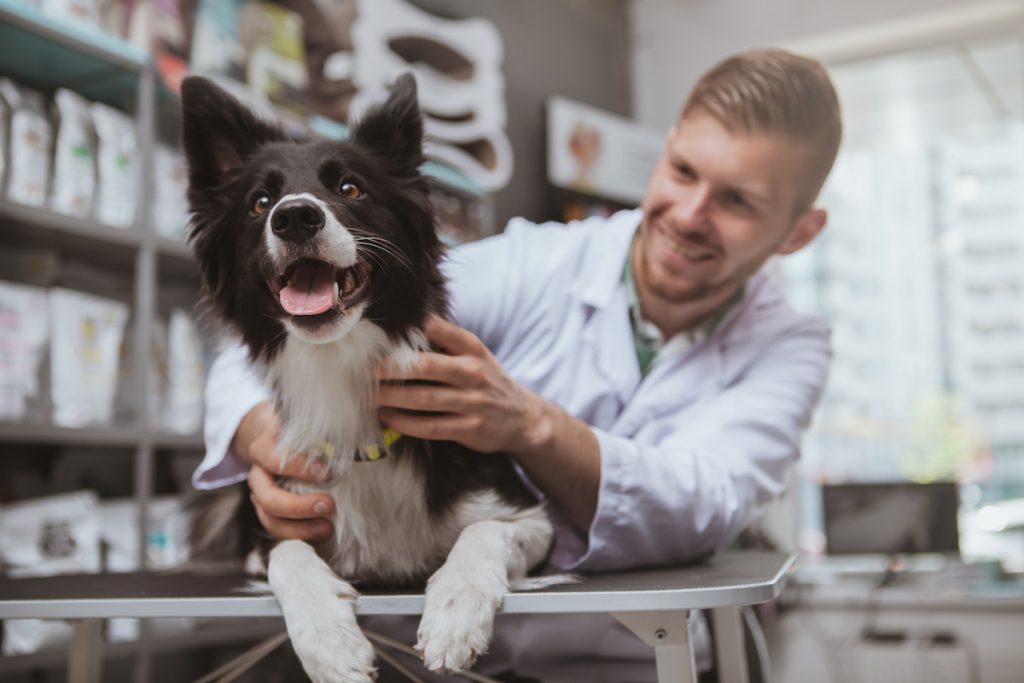The worst part of any pet owners’ experience is having to worry about getting through the finances of a sick pet. If you’re reading this, you’ve probably started researching strange pet behaviour and it’s put you in a panic.
So, does emergency pet insurance cover vet visits ? The answer is yes—but with some important caveats.
Coverage depends on your policy’s terms, such as exclusion periods, pre-existing conditions, and limits. Having the right dog insurance could still be a financial lifesaver when the unexpected strikes.

Common symptoms that may require an emergency vet visit
- Signs of pain: Dogs in pain may cry out, limp, or refuse to move. Restlessness or anxiety can also indicate discomfort.
- Seizures in dogs: Seizures often appear as muscle twitching, stiffening, or collapsing. If it lasts more than five minutes, it’s a medical emergency.
- Coughing, vomiting, and diarrhoea: Persistent coughing, especially overnight, could signal respiratory or heart issues. Diarrhoea and vomiting can indicate parasites, toxins, or infections.
- Dog breathing problems: Laboured breathing can point to lung issues, heart disease, or injury.
- Inability to urinate or defecate: Straining without producing urine or signs of a bloated abdomen could mean a urinary obstruction, which is life-threatening.
- Unconsciousness or loss of balance: Sudden collapse or loss of balance can be due to heart issues, neurological conditions, or tick paralysis.
- Foreign body ingestion: Dogs often swallow objects they shouldn’t, such as toys or socks, which can cause blockages or internal damage. Symptoms include vomiting, loss of appetite, and abdominal pain.
- Bloat or Gastric Dilatation & Volvulus (GDV): Bloat occurs when the stomach twists, causing restlessness and a distended abdomen.
Types of emergencies covered by Knose Pet Insurance
Most emergency pet insurance plans, including Knose, cover a wide range of emergencies. The key is knowing which incidents are classified as “emergencies” by your policy and ensuring they meet coverage conditions.
Keep in mind that exclusion periods may apply to illnesses (14 days) or specified conditions (6 months), and chronic or hereditary conditions may not qualify for coverage.
| Covered by Knose | Common scenarios |
|---|---|
| Injuries | Including broken bones, cuts, and internal injuries from accidents like car incidents or falls. Injuries must occur after the policy’s effective date and be unrelated to pre-existing conditions. |
| Sudden illnesses | Severe conditions like pancreatitis, seizures, or poisoning are often covered, provided they occur after the exclusion period (14 days for illnesses) and do not result from pre-existing conditions. |
| Foreign body ingestion | If your dog eats something they shouldn’t (toys, socks, toxic substances), the insurance can help cover the emergency surgery costs. |
| Severe allergies reactions | Whether due to bee stings, medications, or food, rapid treatment can save a pet’s life—and insurance will ease the financial burden. |
💡 A Note on Coverage Limits: While Knose covers a broad range of emergencies, it’s important to remember that pre-existing conditions aren’t automatically covered.
Depending on the nature of the condition (e.g., curable vs. chronic), it may be reassessed for future coverage following an evaluation of your pet’s health. Chronic or hereditary conditions, however, are generally excluded.
Knose also doesn’t impose sub-limits on individual conditions or treatments, which means you can make claims without worrying about hitting caps on specific treatments.
💡Additionally, routine care (like vaccinations and annual check-ups) and elective procedures (such as desexing or grooming) aren’t part of the standard cover, but the good news is you can add optional extras* for things like dental care or behavioural conditions to give your pet more extensive coverage.
In each of these situations, the financial support from an emergency pet insurance plan is invaluable, allowing you to focus on getting your pet the care they need without the stress of massive vet bills.

Final Thoughts: Is Emergency Pet Insurance Worth It?
Emergency pet insurance provides peace of mind by covering unexpected vet costs, allowing you to focus on your pet’s health rather than the financial burden.
Knose Pet Insurance goes a step further with flexible plans, no sub-limits, and optional extras tailored to your pet’s needs.
If you’re ready to protect your furry friend, get a quick quote today. With Knose, you’re not just investing in emergency pet insurance—you’re investing in your pet’s well-being.
Disclaimer:
Coverage is subject to policy terms, conditions, exclusions, and the selected plan. Pre-existing symptoms and conditions, exclusion periods, and chronic or hereditary conditions may not qualify for coverage. Optional extras must be added within the eligibility window and may have specific terms. Please refer to the Knose Pet Insurance Product Disclosure Statement for full details.
*Please note that optional extras must be added when your pet is younger than 2 years and 364 days, and these may have their own exclusion periods (e.g., 6 months for dental illness or behavioural conditions).


